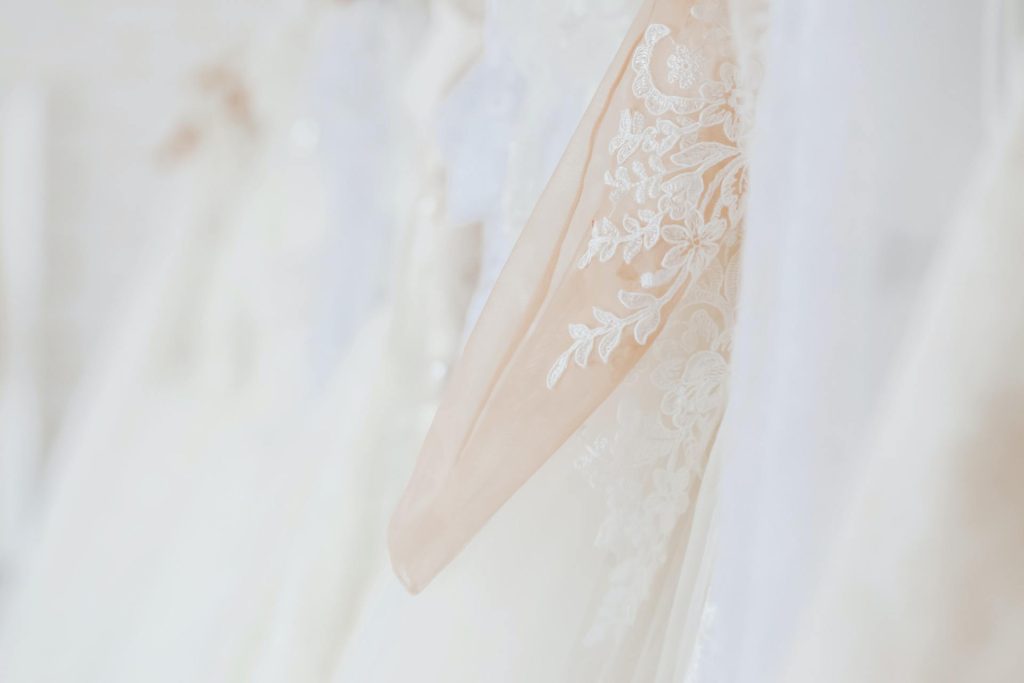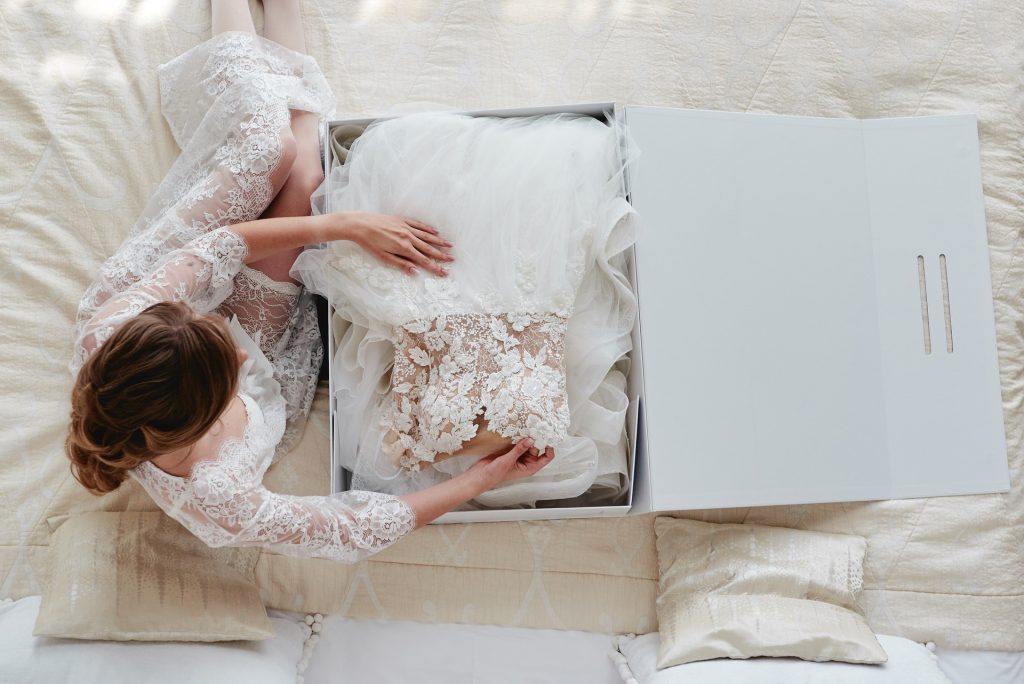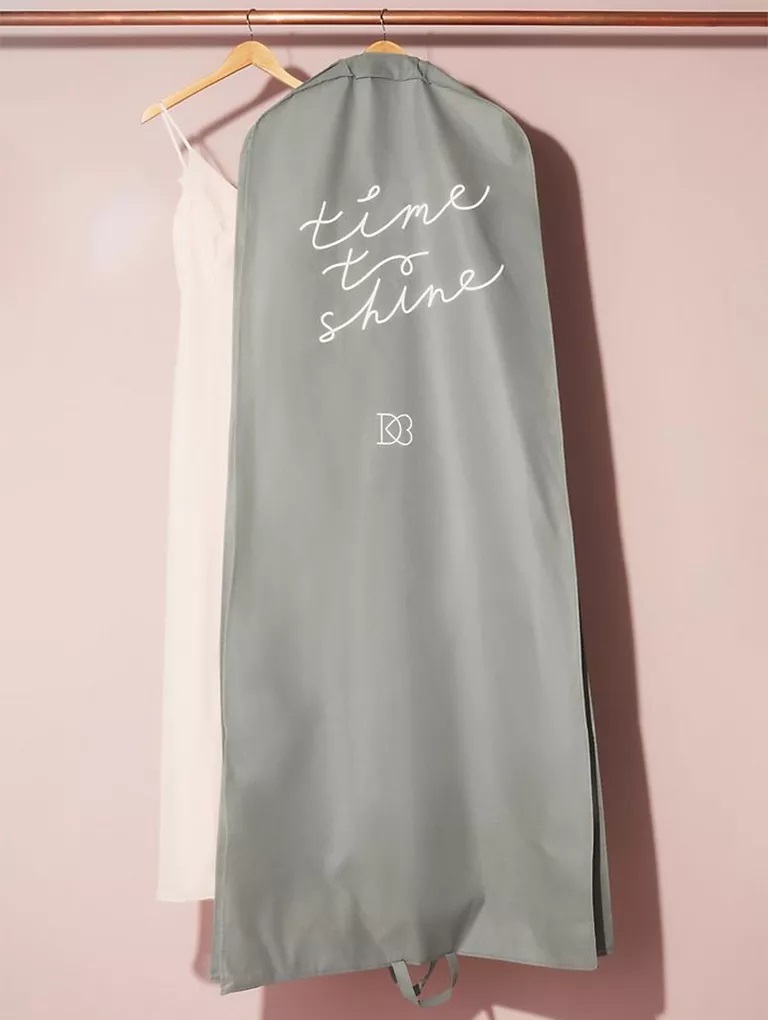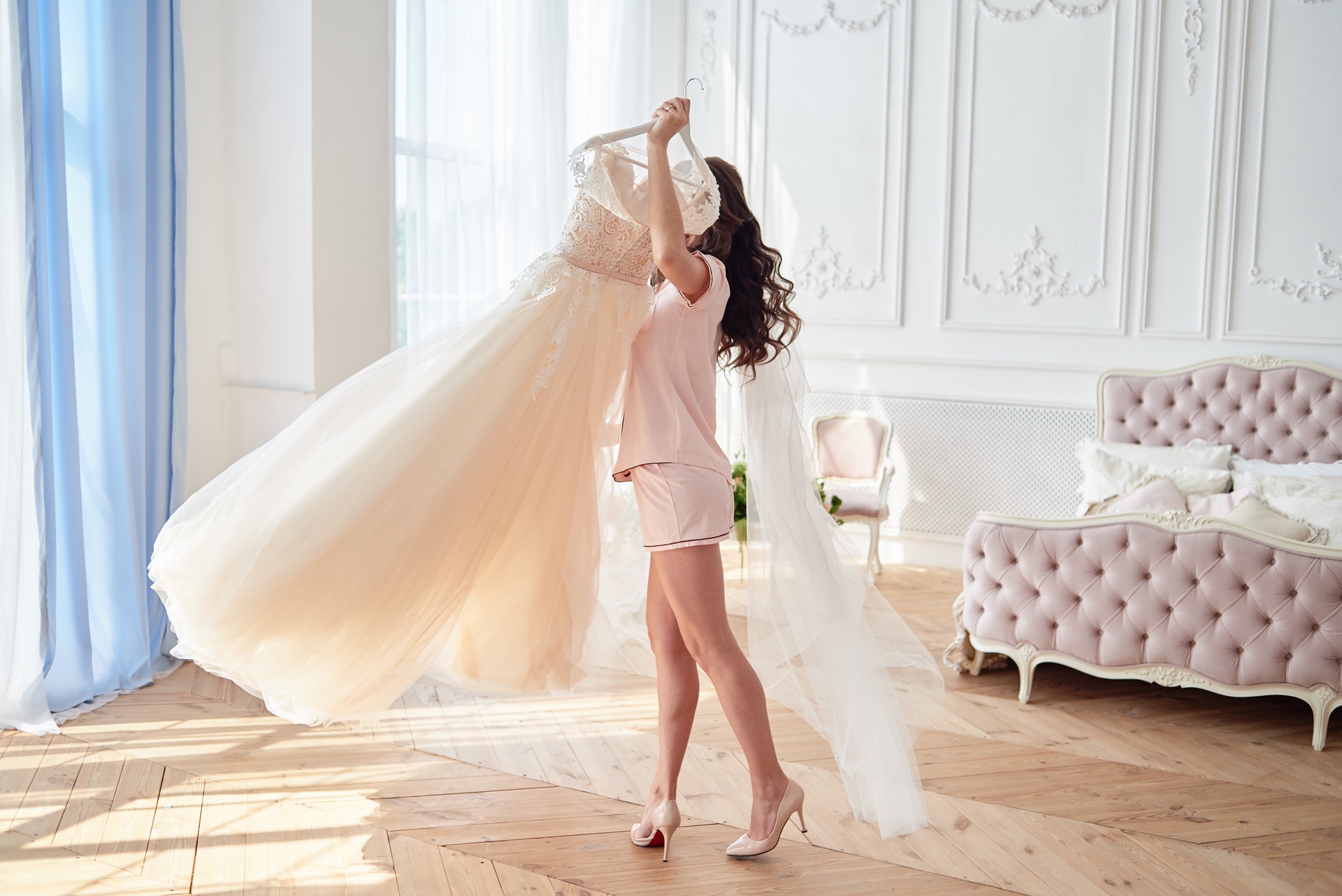Sorry to be the bearer of bad news, but your beloved wedding dress turning yellow is NOT an old wives tale; it does actually happen. But wait! We also have good news! You can do some things to help eliminate the yellowing process. So, don’t leave us; we’ve got all the details you need to save your wedding dress from turning yellow.
Your wedding gown is quite possibly the most important piece of clothing you’ll ever own. It’s a symbol of your marriage’s first blossom; a delicate work of wearable art destined to become a precious keepsake passed down through generations. To keep your white bridal gown in good condition for posterity, though, you’ll need to keep it clean and pay attention to minor details.
After spending a significant amount of money (and numerous hours) on the perfect gown, it’s only right to ensure it has the happily ever after it deserves through appropriate wedding gown maintenance.
Whether you dream of your daughter wearing it or using it as a christening gown, properly preserving your wedding gown ensures that it will be present for all of those special occasions to come.

Why Do Wedding Dresses Turn Yellow?
Before we get into what you can do to stop your wedding dress from turning yellow, let’s discuss why it happens. Almost every fabric, including your bridal gown, has a shelf life.
When the original fibers of a fabric experience chemical degradation due to quality issues with the textile, yellowing occurs. The white and pastel textiles progressively deteriorate, resulting in a light-to-medium yellow tint in normally-white wedding gowns. In addition, due to chemical breakdown, vintage dresses may develop dark brown and black stains.
The plastic bags that many bridal boutiques provide (and that most brides keep their gowns in) are one of the primary causes of bridal gown yellowing. The majority of plastics emit harmful vapors that encourage yellowing. However, some textiles will yellow more than others, and total yellowing may be impossible to avoid, even with good care.
Silk fabric tends to yellow more than synthetic materials like polyester, rayon, and acetate. However, a synthetic fabric, nylon, yellow more quickly than other synthetic materials. Therefore, wedding dresses that can be wet-cleaned have a benefit in that they can be whitened for future usage with a fabric whitener if they do turn yellow.
There are a few other ways wedding dresses can yellow as well. We’ve covered as many as we can in detail below.
What Caused My Wedding Dress to Yellow?
Fiber Degradation
The degradation of fibers in your gown can be exacerbated by various environmental circumstances, including direct sunshine, high humidity, or exposure to extreme heat. While these factors have a long-term negative impact, they are far from the most critical causes that contribute to the yellowing of your dress.
Chemical Additives
While it is not the bride’s fault, chemicals introduced during the fabric’s manufacturing process to make up her dress are a common cause of wedding dress yellowing.
Because of the consequences of inappropriate chemical formulation mixed with long-term storage, chemicals in textile softeners (chlorine, oils, animal fats, waxes, and so on) might begin to disintegrate. Furthermore, these compounds might collect damaging particles from your busy wedding days, such as dirt, dust, and oils, hastening the yellowing process.
Pollutants in the Atmosphere
Atmospheric pollutants, particularly nitrogen, can be one of the most powerful agents that cause fabrics to yellow. These oxides can arise from various sources, including vehicular pollution, residential heating systems, and industrial activities.
However, it’s vital to note that air pollution usually only causes yellowing on the gown’s surface. This is one of the reasons why the bridal gown preservation facilities where most dresses are handled use cutting-edge air circulation and filtration systems to keep all air contaminants out throughout the preservation procedure.
Transferred Contaminants
Contaminants transmitted to your gown during storage, both before and after you purchase it, are known as transferred contaminants. For example, polyethylene (plastic) bags have long been recognized to cause fabric fading, sometimes known as “phenolic yellowing.”
Phenolic yellowing can also be induced by acidic papers, cardboard, and other wrapping materials in addition to plastic coverings. The Wedding Gown Preservation Kit uses acid-free tissue paper and an acid-free storage box to avoid transferring contaminates during the long-term preservation of your wedding gown.
Consumer Contaminants
Think about your special day. Throughout the day, your wedding gown gets bombarded with several contaminants that can stick to or absorb into the fabrics of your dress. You have deodorant, dirt from the dance floor, body lotion, food, smoke, grass stains from outdoor photos, wine or other cocktails, sugars from cutting the cake, tanning lotions, perfume re-applications—oh, and let’s not forget sweat!
You get the idea. Your poor gown goes through a lot! Are all of these stains worth it? Well, we think so! Those memories will last forever—and with proper care and storage, you can cherish those memories and worry less about your gown yellowing.

Wedding Gown Care Before the Big Day
The greatest strategy for preserving your wedding gown’s long-term preservation is to start caring for it before saying, “I do.” You might believe that there isn’t much you can do to care for your wedding gown before the big day. But the truth is that various factors might influence the quality and appearance of your gown.
If you are unaware of what can impact your dress, you might be putting your dream wedding dress at risk of damage. So if your wedding day hasn’t yet arrived, learn what to watch out for, and use these helpful tips to keep your gown in tip-top shape in the days leading up to the event:

Take Your Dress Home or Leave It At the Boutique?
If you order or purchase a wedding gown from a local boutique, have it stored there until the day of your wedding (or a few days before). Here are a few reasons why we suggest this:
- We suggest you leave it at the boutique as long as possible because you’ll be tempted to try it on if you take it home. And believe it or not, you run the danger of ruining or destroying the dress every time you do so. Oils from your skin can transfer to the dress; you risk having makeup on it, and your jewelry can catch the fabric of your bridal gown quickly and easily, which can cause runs or rips.
None of these issues may turn into the end of the world, but remember: once your wedding dress leaves the store, they are no longer responsible for it.
- If you keep your gown at home, keep it away from scents that materials might easily absorb and linger, such as those from cooking, pets, or smoking. Any of these things can cause damage to the fabric and fibers and speed up the yellowing process.
- Pets that like to snuggle into materials should be kept away from the garment.
- Hang your gown in a dry, secure area where it can breathe. When clothes are crushed in a closet, they develop difficult-to-remove wrinkling that requires steaming. High heat damages materials; thus, irons should only be used with extreme caution.
- Wrapping your wedding gown in clean, colorless cotton fabrics, such as sheets, might help protect it at home.
More Tips to Prevent a Wedding Dress from Yellowing
One of the most common causes of yellow wedding gowns is that women frequently store their dresses in plastic bridal gown bags. Chemical vapors from most polymers can cause discoloration.
Even with careful storage, some fabrics will yellow faster than others. Preventing yellowing completely may be impossible. Silk materials, in general, oxidize (yellow) more quickly than synthetic fabrics like polyester, rayon, and acetate.
- The best protection you can give your bridal gown from yellowing is to store it in an acid-free, lignin-free environment.
- Store your wedding dress in a breathable bag, never a plastic bag.
- Acid migration can also be prevented by wrapping, cushioning, and stuffing your bridal gown with acid-free tissue or cotton muslin.
- Have your wedding dress cleaned and professionally preserved.
- Store your wedding dress in a climate-controlled vault. Unbox The Dress provides this service, and it’s the best way to keep your wedding dress from yellowing.
- If you plan to keep your wedding dress at home, always store it in a dark and dry place. And always in a breathable bag!
- Store your wedding gown as far away from the kitchen as possible. The scents from cooking can absorb into the fabric.
- Never smoke in or around your wedding dress!
Your wedding dress is like an extension of your soul. It’s the most important fashion attire you will ever wear, so don’t just throw it on the floor after the wedding. Even after your big day, proper care and love are needed to ensure that it stays beautiful forever.
And yellowing of the fabric is a real thing, so, please—we can’t say it enough! Get your wedding dress professionally cleaned and preserved, or make sure you store it in a climate-controlled area.


